Cúchulainn: The Comet of a Thousand Faces
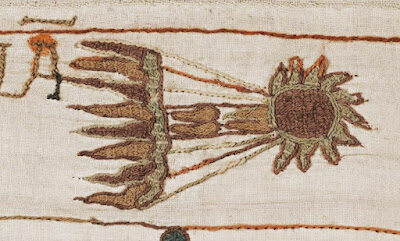
It was the Egyptians who first used the description ‘hairy star’ which then became, in Greek, kometes or ‘hairy one’. An unidentified hieroglyph which, for many years, was interpreted as ‘woman with disheveled hair’ may, in fact, directly refer to a comet since this hieroglyph is almost identical to that of the sky goddess Nut, except for the addition of the flowing hair. (Clube and Napier (1982), p. 167.)
Fragmenting comets acquired partners, children and extended families. Comets could have 'virgin births' or parents could devour their children or vice versa. The name of the principal comet can be traced in the various cultures and the time described when the founder of the dynasty of the gods was single and alone in the sky: the giant comet that entered the solar system perhaps 70,000 years ago. As years passed, the stories mixed and mingled in confusing ways. But still, the primary features remain clear as long as the 'supernatural' elements are not stripped out, (which is what I was doing myself in the early days of research). Mike Baillie gives an example using the Celtic god, Cúchulainn:
Cúchulainn became ... a monstrous thing, hideous and shapeless, unheard of. His shanks and joints, every knuckle and angle and organ from head to foot, shook like a tree in the flood or a reed in the stream. His body made a furious twist inside his skin, so that his feet and shins and knees switched to the rear and his heels and calves switched to the front. The balled sinews of his calves switched to the front of his shins, each big knot the size of a warrior's bunched fist. On his head, the temple-sinews stretched to the nape of his neck, each mighty, immense, measureless knob as big as the head of a month-old child. His face and features became a red bowl: he sucked one eye so deep into his head that a wild crane couldn't probe it onto his cheek out of the depths of his skull; the other eye fell out along his cheek. His jaw weirdly distorted: his cheek peeled back from his jaws until the gullet appeared, his lungs and liver flapped in his mouth and throat, his lower jaw struck the upper a lion-killing blow. His heart boomed loud in his breast like the baying of a watch-dog at its feed or the sound of a lion among bears. Malignant mists and spurts of fire - the torches of the goddess Badb - flickered red in the vaporous clouds that rose boiling above his head, so fierce was his fury. The hair of his head twisted like the tangle of a red thorn bush stuck in a gap; if a royal apple tree with all its kingly fruit were shaken above him, scarce an apple would reach the ground but each would be spiked on a bristle of his hair as it stood up on his scalp with rage. The hero-halo rose out of his brow, long and broad as a warrior's whetstone, long as a snout, and he went mad rattling his shield, urging on his charioteer and harassing the hosts. Then, tall and thick, steady and strong, high as the mast of a noble ship, rose up from the dead center of his skull a straight spout of black blood darkly and magically smoking... (Kenny (1986), 'A Celtic Destruction Myth: Togail Bruidne Da Derga', quoted by Baillie in his introduction to The Celtic Gods (2005).This description of Cúchulainn is not what most people read in their edited children's versions of the myths. This one describes Cúchulainn's 'riastradh' or frenzy, which Baillie calls a "warp-spasm." The point is that Cúchulainn is being described shaking violently, covered with lumps and bumps, making terrifying sounds, his hair twisted and standing up with "vaporous clouds boiling above his head" and with "a spout of dark blood jetting from his skull". That pretty much describes a very, very close comet interacting electrically with the atmosphere and magnetic field of the earth.
Cúchulainn next climbs into his "thunder chariot" that was bristling with all kinds of spikes and bits of metal that are there to rip the enemy to shreds, then the chariot is "speedy as the wind ... over the level plain" pulled by two horses with flowing manes. Cúchulainn starts killing people first a hundred at a blow, then two-hundred, then three-hundred, and so on. His chariot wheels sink so deeply into the earth that they tear up boulders, rocks, flagstones, gravel, creating a dyke high enough to be a fortress wall. He mowed more people down, leaving the bodies six deep. He made this "circuit of Ireland" seven times according to this particular story and "this slaughter ... is one of the three uncountable slaughters on the Táin (One of Ireland's great legendary epics.) ... only the chiefs have been counted. ... in this great carnage on Muirtheimne Plain, Cúchulainn slew one hundred and thirty kings. not one man in three escaped" without some injury.
Most people don't know about this aspect of Cúchulainn since the woman who translated the tales from Irish into English (Lady Augusta Gregory), thought that "the grotesque accounts of Cúchulainn's "distortion" only meant that in time of great strain or danger he had more than human strength, so she changed all that to "the appearance of a god." Baillie reacts to this:
Reading these comments carefully, the idea that the full description of Cúchulainn's frenzy reduces to 'more than human strength' does seem like an understatement. That he 'took on the appearance of a god' likewise does not do full justice to the awfulness. ... But it appears that, in studying and trying to make sense of the myths, it is the supernatural elements - that seem to make no sense - that are regarded as gilding. They are seen as exaggerations, or padding, or the product of over-fertile imaginations. thus they are often the bits that are ignored, or left out of the tales ... the result of this is that the tales tend to be left with only the natural elements. King Arthur, a Celtic god, ends up described only as a king; Cúchulainn becomes a heroic Irish youth. thus readers are pressurized towards regarding these heroes as real flesh and blood people, when in reality they were always supernatural or, if you like, gods. (Baillie & mccafferty (2005), The Celtic Gods: Comets in Irish Mythology, p. 15.)Legends of the Fall and Genetic Mutations
Our civilization has known about the flood legends of the Bible for about two thousand years; it was only in the 19th century that we became aware that this story was derived from a more ancient source; the Sumerians. It was then, in the late 19th and early 20th century, that ethnologists and other experts began to collect the flood legends of the north Eurasian peoples and to compare them with similar stories of other peoples.
What they found was that the north Eurasian peoples spoke not only of a water-flood, but also bombardments of fire and numerous evil suns in the sky, described as 'burning mountains'. There were also fire-breathing serpents in the sky and earthquakes that lasted for days, violent storms, torrents of water falling for days and boiling waves as 'high as a tent' or mixed with stones. There were descriptions of roaring from the skies and other horrifying noises, followed by grey darkness in the day and nights as black as pitch. Snow storms that lasted for months rounded off the scenarios. Obviously, these stories did not exactly match the relatively benign - even if world-covering - Flood of Noah that resulted from a rain lasting 40 days and nights and the opening up of the "fountains of the deep."
The appalling cosmic catastrophe had long-term consequences for all life on our planet, and was, obviously, a world-wide event in one respect or another.
Spirals and Cosmic Divers
A selection of the stories of the northern Eurasians - mainly those living between the Black sea and the Caspian sea (today's Azerbaijan, Armenia and Georgia) - have been collected together, along with some of the geological and archaeological evidence, by Heinrich Koch in a book entitled The Diluvian Impact. (2000) It is highly recommended, with a small caveat: he seems to have conflated a number of events.
Nevertheless, I found there the origin of certain stories that are said by Yuri Stoyanov (The Other God (2000)) to be the oldest forms of dualism. Here, I'm going to skip the lengthy extract of the primeval myth of the three suns that pervades the Palaeo-Siberian peoples myth cycles. It's a terrifying story and worth reading, but it doesn't move us to our main topic, so I will omit it.
Clearly, it is in these cometary experiences described as struggles between various evil and noble forces that we find the origin of the Aryan dualistic principle that was at the foundation of gnostic religious formations such as that of Mani, the Bogomils and Cathars. Koch suggests that dualism is an infallible sign of the cataclysmic experience. Apparently, after such, no one in their right mind continues to believe only in a good and loving god who is master of the universe.
Werewolves, Vampires and Cannibals, Oh My!
In addition to the tales collected by Koch, a related book is a collection of the accounts from Native Americans: Man and Impact in the Americas by E. P. Grondine. One very interesting thing about both of the volumes mentioned is that the issue of genetic mutation is described in the myths.
In both the Americas and Eurasia, the stories of the impacts and floods include related legends of giants, dwarves and cannibals which are not the instigators of the cataclysms as one might infer when recalling the Nephilim in the Bible, but rather the consequence of it.
Generally, these stories are about very aggressive, warlike, humanoid monsters. The ancient Native American myths of the Windigo can be traced back to comet catastrophes. Nowadays, of course, the Windigo is thought of as a malevolent, cannabilistic spirit that can possess the bodies of humans and cause them to transform into a monster, rather like the legends of werewolves; but what if it is not possession but rather a reference to mutation?
These monsters were strongly associated with protracted periods of cold and famine which can be the results of comet events and it is known from medical research that a ketogenic diet and cold adaptation can induce genetic upregulation or downregulation. Generally, these effects are beneficial and neuroprotective, but perhaps it depends on the individual genetic make-up? Windigos and their Eurasian counterparts were also described as greedy and never satisfied with killing; they were always on the march looking for new victims.
The Electrophonic Cosmic Logos
In respect of the idea of genetic mutations accompanying cometary cataclysms, I read an interesting paper discussing the possibility that the Tunguska event caused genetic changes. The abstract says:
One of the great mysteries of the Tunguska event is its genetic impact. Some genetic anomalies were reported in the plants, insects and people of the Tunguska region. Remarkably, the increased rate of biological mutations was found not only within the epicenter area, but also along the trajectory of the Tunguska Space Body (TSB). At that no traces of radioactivity were found, which could be reliably associated with the Tunguska event. The main hypotheses about the nature of the TSB, a stony asteroid, a comet nucleus or a carbonaceous chondrite, readily explain the absence of radioactivity but give no clues how to deal with the genetic anomaly. A choice between these hypotheses, as far as the genetic anomaly is concerned, is like to the choice between "blue devil, green devil and speckled devil", to quote late academician N. V. Vasilyev. However, if another mysterious phenomenon, electrophonic meteors, is evoked, the origin of the Tunguska genetic anomaly becomes less obscure. (Silagadze (2003), 'Tunguska Genetic Anomaly andElectrophonicMeteors'.The author proposes the idea that electrophonic effects produced by comets/meteors can induce genetic changes in biological organisms. The paper also mentions a genetic mutation of a human being involving the Rh0D gene. The conclusion is that there was some "unknown stress factor" and that it might be electromagnetic radiation which is said to accompany electrophonic meteors.
Reports of noisy meteors date back to at least the year 817, when a Chinese observer documented a meteor with a sound "like a flock of cranes in flight." In 1676, Italian astronomer Geminiano Montanari observed one that sounded like "the rattling of a great cart running over stones." Montanari's calculations put the meteor thirty-eight miles up in the sky, which was - as he well knew - too far away for its sound to reach him instantly so he doubted that he had actually heard it, though - thankfully - he recorded the data anyway. Later, in 1833, an intense Leonid meteor storm resulted in more reports of meteors that swished, whooshed, or "resembled the noise of a child's popgun." Once again, it was deemed impossible for the sound to have traveled that fast, so the reports were discounted.
These odd reports were unexplained until Colin Keay of the University of Newcastle in Australia suggested in 1980 that as meteors fall through the Earth's magnetic field, they generate radio signals audible to the human ear. Keay postulated that falling meteors generate very low-frequency radio signals that travel at the speed of light to the ground, where they cause any number of things in the environment to vibrate, from your eyeglasses to your hair!
That means that, at the exact time that you see the meteor, you may also hear crackling, whistling or swishing sounds; sounds like a jet airplane or whatever. That is to say, you are not actually hearing sound from the fireball but rather hearing sound from local objects vibrating in response to the intense VLF emission of the fireball. That is also why the phenomenon may be heard by one person and not another. ELF and VLF electromagnetic fields can be generated by comet or meteor explosions the same way an EMP can be generated by a nuclear explosion. (Colin Keay's list of publications on the topic of electrophonic meteors can be found here.
And yes, there were reports of witnesses hearing the Tunguska object before its appearance. They said it sounded like low thunder, a cavernous roar.
As to genetic mutations, I'm going to omit here the long discussion of ELF/VLF radiation effects on genes except to report the conclusion which said that, after such exposure gene HSP70 can no longer buffer variation:
Therefore some mutations will become unmasked and individuals with abnormal phenotype will appear in the population. If a mutation proves to be beneficial in the new environmental conditions, the related traits will be preserved even after the HSP70 resumes its normal function. (Silagadze (2008), op. cit.) (italics, mine)My guess is that the ancient reports of what must have been genetic mutations following Earth's encounters with celestial objects were probably true and quite remarkable. Tunguska was a modest event, so to say. Who knows what a serious bombardment might produce.
Celestial Intentions
In a paper addressed to the European Office of Aerospace Research and Development, dated June 4th, 1996 and entitled, 'The Hazard to Civilization From Fireballs and Comets', Victor Clube wrote:
Asteroids which pass close to the Earth have been fully recognized by mankind for only about 20 years. Previously, the idea that substantial unobserved objects might be close enough to be a potential hazard to the earth was treated with as much derision as the unobserved aether. Scientists of course are in business to establish broad principles (e.g. relativity) and the Earth's supposedly uneventful, uniformitarian environment was already very much in place. The result was that scientists who paid more than lip service to objects close enough to encounter the Earth did so in an atmosphere of barely disguised contempt. Even now, it is difficult for laymen to appreciate the enormity of the intellectual blow with which most of the Body scientific has recently been struck and from which it is now seeking to recover. [The Comet Shoemaker-Levy impacts on Jupiter.]Köfels' Impact Event
The present report, then, is concerned with those other celestial bodies recorded by mankind since the dawn of civilization which either miss or impinge upon the Earth and which have also been despised. Now known respectively as comets (>1 kilometre in size) and meteoroids (<10m).
Confronted on many occasions in the past by the prospect of world-end, national elites have often found themselves having to suppress public panic - only to discover, too late, that the usual means of control commonly fail. Thus an institutionalized science is expected to withhold knowledge of the threat; a self-regulated press is expected to make light of any disaster; while an institutionalized religion is expected to oppose predestination and to secure such general belief in a fundamentally benevolent deity as can be mustered. [...]
There are fundamental paradoxes to be assimilated as a result of this unexpected situation. Thus the perceived culture of enterprise and enlightenment which underpins the two centuries culminating with the space age and which led mankind to spurn comets and fireballs may now be seen as the prelude to a profound paradigm shift: the restoration of an environmental outlook more in keeping with that which preceded American independence and which paid serious heed to comets and fireballs. [italics, mine]
...the Christian, Islamic and Judaic cultures have all moved since the European Renaissance to adopt an unreasoning anti-apocalyptic stance, apparently unaware of the burgeoning science of catastrophes. History, it now seems, is repeating itself: it has taken the space age to revive the Platonist voice of reason but it emerges this time within a modern anti-fundamentalist, anti-apocalyptic tradition over which governments may, as before, be unable to exercise control. ... Cynics (or modern sophists), in other words, would say that we do not need the celestial threat to disguise Cold War intentions; rather we need the Cold War to disguise celestial intentions! [emphasis in the original]
Here, I will skip over the fascinating discussion of the Köfels' Impact Event which was recorded in cuneiform on a tablet found in the remains of the Royal Palace at Nineveh. It is now in the British museum as catalogue No. K8538. It was a copy of a contemporary Sumerian observation of an Aten asteroid over a kilometre in diameter that impacted Köfels in Austria on the 29th of June 3123 BCE.
I am also going to skip the discussion of the history of astronomy and astrology recounted in the book Comets by astronomers Bailey, Clube and Napier.
End of the Early Bronze Age
For almost 500 years the Hittites were the dominant power in Anatolia, the area that is mostly modern day Turkey, though they were completely forgotten for a very long time, remembered only in completely inaccurate renderings in the Bible. Modern studies reveal that the Hittites themselves were not a highly creative or innovative people, but that they drew most of the inspiration for their social, religious, literary and artistic renderings from the cultural traditions of both earlier and contemporary Near Eastern civilizations.
Their greatest legacy is that, by absorbing the elements of their neighbors, they preserved them. This is typical of a regime that is 'new' or different within a given population: to seek to validate their legitimacy by connecting themselves in some way to the traditions of the native population.
We should note here that the arrival and rise of the Hittites in Anatolia follows a period of historical discontinuity, i.e. probably as a result of cometary destruction considering all that we have learned was going on in the skies in those times.
Scientists have found the first evidence that a devastating meteor impact in the middle east might have triggered the mysterious collapse of civilisations more than 4,000 years ago. Studies of satellite images of southern Iraq have revealed a two-mile-wide circular depression which scientists say bears all the hallmarks of an impact crater. If confirmed, it would point to the Middle East being struck by a meteor with the violence equivalent to hundreds of nuclear bombs. Today's crater lies on what would have been shallow sea 4,000 years ago, and any impact would have caused devastating fires and flooding. The catastrophic effect of these could explain the mystery of why so many early cultures went into sudden decline around 2300 BCE. ...
The crater's faint outline was found by Dr Sharad Master, a geologist at the University of Witwatersrand, Johannesburg, on satellite images of the Al 'Amarah region, about 10 miles north-west of the confluence of the Tigris and Euphrates and home of the Marsh Arabs. ... Dr Benny Peiser, who lectures on the effects of meteor impacts at John Moores University, Liverpool, said [if confirmed, it would be] one of the most significant discoveries in recent years and would corroborate research he and others have done. He said that craters recently found in Argentina date from around the same period - suggesting that the earth may have been hit by a shower of large meteors at about the same time. (Matthews, 'Meteor Clue to End of Middle East Civilisations', The Sunday Telegraph, 4 November 2001. retrieved here.)
Hundreds of years after the event, a cuneiform collection of 'prodigies', omen predictions of the collapse of Akkad, preserved the record that "many stars were falling from the sky" (Bjorkman 1973:106). Closer to the event, perhaps as early as 2100 BCE, the author of the Curse of Akkad alluded to "flaming potsherds raining from the sky" (Attinger 1984). Davis (1996) has reminded us of Clube and Napier's impact theory, and asked "Where is the archaeological and geological evidence for the role of their 'Taurid demons' in human history?" The abrupt climate change at 2200 BCE, regardless of an improbable impact explanation, situates hemispheric and social collapse in a global, but ultimately cosmic, context. (Weiss (1997), Late Third Millennium Abrupt Climate Change and Social Collapse in West Asia and Egypt, p. 720.)It is not a surprise that, of all the various factors and data examined for clues that could explain the environmental and social upheavals at the end of the early Bronze age, catastrophe is the subject matter most avoided by archaeologists and historians. Yet most archaeologists are certainly aware of Claude Schaeffer's enormous work, Stratigraphie Comparée et Chronologie de l'Asie Occidentale, which is an incredible collection of archaeological evidence demonstrating extensive earthquake and other catastrophic damage detected in Bronze Age settlements throughout the near and middle east. (Schaeffer (1898-1982) was a French archaeologist. His work led to the uncovering of the Ugaritic religious texts. Ugarit was a port city in northern Syria.)
Claude Schaeffer, the 20th century's most eminent French archaeologist, was the first researcher to present evidence for widespread seismic catastrophes in large parts of Asia Minor and the Levant at around 2300 BCE. Based on a comparative study of destruction layers in more than 40 sites, he ordered and classified earthquake horizons as synchronous and interrelated benchmarks in archaeological stratigraphy and chronology. Evidence for major earthquake damage in early Bronze Age strata had been detected in many Anatolian and Near Eastern settlements, such as Troy, Alaca Hüyük, Boghazköy, Alishar, Tarsos, Ugarit, Byblos, Qalaat, Hama, Megiddo, Tell Hesi, Beit Mirsim, Beth Shan, Tell Brak and Chagar Bazar (Gammon 1980; 1982).The HITTITES
Most scholars, however, have refrained from taking Schaeffer's main research- findings into consideration. The recent and most comprehensive textbook on 3rd millennium BCE civilisation collapse fails to mention his research altogether (Dalfes et al. 1997). One looks in vain for any reference to his theory of early Bronze Age collapse. This reticence is even more remarkable in view of the fact that Schaeffer was also, to my knowledge, the first archaeologist to claim that a distinct shift in climate was synchronous with civilisation collapse... «au Caucase et dans certains régions de l'Europe protohistorique, des changements de climat semblent, à cette période, avoir amené des transformations dans l'occupation et l'économie du pays». (translation: "in the Caucasus and in some parts of protohistoric Europe, climate changes seem, at this time, to have brought changes in the occupation and economy of the country." [italics, mine.] (Schaeffer (1948: 555/556), quoted by Peiser (1998), 'Comparative Analysis of Late Holocene Environmental and Social Upheaval: Evidence for a Global Disaster around 4000 BP', in Natural Catastrophes During Bronze Age Civilizations: Archaeological, Geological, Astronomical, and Cultural Perspectives, Peiser et al. (eds.), pp. 117-139.)
What was going on between the end of the Early Bronze Age and the end of the Late Bronze Age?
Hittite and Luwian texts have been found in large numbers; they are the earliest complete texts in any Indo-European language. The Hittites played an important role in transmitting the customs, traditions and institutions first attested in the earliest societies of Mesopotamia. The Hittite religion was a composite of rituals and beliefs of the native Hattians, the Indo-Europeans, Hurrian and other early Mesopotamian elements. Hittite literature was also composite, consisting of stories that were Hattian, Sumerian, Akkadian, Babylonian and Hurrian.
According to the standard view, civilization began in Mesopotamia with the advent of agriculture, the wheel, cities, writing (to keep accounts), and so on. It is taken as a given that control over vast numbers of people, the ability to mobilize them into armies to kill vast numbers of other people, and to thus have the means of establishing vast empires, is 'civilization'. David W. Anthony writes:
[A]rchaeologists generally do not understand migration very well, and migration is an important vector of language change ... Migration disappeared entirely from the explanatory toolkit of Western archaeologists in the 1970s and 1980s. But migration is a hugely important human behavior...The Mycenaean civilization also appeared rather suddenly at about the same time as the rise of the Hittite empire. What is clear is that they didn't come from the same place because the languages were so different. Greek - as recorded in the Linear B tablets - was the language of the warrior kings who ruled at Mycenaea and - surprise, surprise - were destroyed during the same period as the Hittite empire. There are numerous indications that Mycenaean Greek was an intrusive language in a land where non-Greek languages had been spoken. The Greek speakers who showed up in Greece, which wasn't Greece until they got there, obviously came from somewhere else.
Scholars noticed more than a hundred years ago that the oldest well-documented Indo-European languages - imperial Hittite, Mycenaean Greek, and the most ancient form of Sanskrit, or Old Indic - were spoken by militaristic societies that seemed to erupt into the ancient world driving chariots pulled by swift horses. ...
If Indo-European speakers were the first to have chariots, this could explain their early expansion; If they were the first to domesticate horses, then this could explain the central role horses played as symbols of strength and power in the rituals of the old Indic Aryans, Greeks, Hittites, and other Iindo-European speakers.
...Inscriptions place Hittite speakers in Anatolia as early as 1900 BCE. ... The Hittite capital city, Hattusas, was burned in a general calamity that brought down the Hittite kings, their army, and their cities about 1180 BCE. The Hittite language then quickly disappeared; apparently only the ruling elite ever spoke it. ... (Anthony (2010), The Horse, The Wheel and Language)
Ancient Mesopotamian Myths
I am skipping here a lengthy series of expositions of ancient myths included in my text and will only include the following:
There are other myths, apparently not native to the Hittites, that were preserved in the Hittite archives. These texts were literary because they were written down for their own sake and were not part of the ritual performance tradition (as was the myth of the disappearing god). The most important of these imported myths was the Hurrian cycle which starred Kumarbi, the 'father of the gods'.
This Theogony is about the struggle between successive generations of gods: Alalu is overcome by Anu; Anu is overcome by Alalu's son, Kumarbi, who bites off and swallows Anu's genitals, thereby becoming impregnated with the Storm God Teshub, the Tigris river and Tasmisu. The text is fragmentary, so not much more is known about the outcome, but we can guess because it is strikingly similar to the Greek poet Hesiod's Theogony.
The gods of three successive generations in the Kumarbi myth correspond exactly to Ouranos, Kronos and Zeus. And, in each case, this marks the beginning of a new era. The main difference between the Near Eastern and the Greek traditions is that the former begin one generation earlier in respect of the male gods: Alalu has no counterpart in Hesiod's Theogony, which begins with Ouranos. Hesiod's version says that all the gods belong to one family: Gaea, the mother and wife of Ouranos.
In the near eastern version, the warring gods come from two different families and appear in alternate generations. To me, this suggests that the Greek version is the older since it actually does include the 'first generation', only it is Gaea, the mother of Ouranos, who later becomes his wife as well. If we consider the theory of the giant comet breaking up into many pieces, or gods, then it makes perfect sense for them to have been conceived of as being all of one family.
Moreover, the element of Gaea - Earth - and Ouranos - Heaven - being engaged together in the production of the elements of the conflict would reflect the dynamic interactions between a comet and the Earth. This is exactly what is reflected in Hesiod's poem, which has nothing to do with ritual; It tells a story and establishes a genealogical frame for the comet-gods. Herodotus tells us about Hesiod:
[2:53] ... It was only yesterday or the day before, so to speak, that the Greeks came to know the provenance of each of the gods, and whether they have all existed for ever, and what they each look like. After all, I think that Hesiod and Homer lived no more than four hundred years before my time, and they were the ones who created the gods' family trees for the Greek world, gave them their names, assigned them their honours and areas of expertise, and told us what they looked like. Any poets who are supposed to have lived before Homer and Hesiod actually came after them, in my opinion. [4:32] ... Hesiod, however, has mentioned the Hyperboreans, and so has Homer in the Epigoni. (Waterfield (1998), The Histories, translation)This last remark is quite interesting because it suggests an ancient Homeric connection to Northern peoples and the possible origins of the Myceneans and Hittites.
Trevor Bryce, in Life and Society in the Hittite World (2002), notes that a common feature of these ancient myth cycles of the Hittites is that no matter how decisively the evil is defeated, even to the point of being totally fragmented and scattered all over the place, like in Terminator II, he manages to reassemble himself and come back. That is to say, the Storm God's triumph is only temporary. In one story, the enemy Kumarbi mates with a mountain peak to produce a diorite monster to be a champion.
Henceforth let Ullikummi be his name. Let him go up to heaven to kingship. Let him suppress the fine city of Kummiya (storm god's home town). Let him strike Teshub. Let him chop him up fine like chaff. Let him grind him under foot like an ant. Let him snap off Tasmisu like a brittle reed. Let him scatter all the gods down from the sky like flour. Let him smash them like empty pottery bowls. Let him grow higher each month, each day. (Hoffner (1990), op. cit., quoted by Bryce (2002).)The cometary imagery in the above extract is quite clear. Bryce writes:
When he has grown so large that the sea comes only to his middle, the sun god sees him and is greatly alarmed. He reports the news to Teshub, who resolves to do battle with the monster. But when he sees him he is filled with dismay: 'Who can any longer behold the struggle of such a one? Who go on fighting? Who can behold the terrors of such a one any longer?' Teshub is powerless against such an opponent. His sister Shaushka volunteers to approach Ullikummi and attempt to win him over by her songs and her charms. to no avail. 'For whose benefit are you singing?' a great sea-wave asks of her. 'For whose benefit are you filling your mouth with wind? Ullikummi is deaf; he cannot hear. he is blind in his eyes; he cannot see. he has no compassion. So go away, Shaushka, and find your brother before Ullikummi becomes really valiant, before the skull of his head becomes really terrifying. (Bryce (2002), op. cit., pp. 226-227.)Again, we observe the cometary nature of the god, a god whose head can become terrifying in the same way Cúchulainn was described in the midst of his "warp Spasm."
The obvious question asked by scholars about these myths is: Why were they preserved at all? They certainly do not provide any sort of spiritual or moral teachings. And the answer is, of course, that they were recording things that actually happened and everyone knew it: a giant comet entered the solar system, broke up into numerous still-large pieces, as comets are wont to do, and, being on an earth-crossing orbit, periodically interacted with our planet with cataclysmic results.
As noted, the Near Eastern gods, and the gods of Greece, as well, offered nothing to their supplicants in terms that were morally or spiritually uplifting; they were just human beings on a grand scale. The gods experienced love, anger, jealousy, fear, and could be liars and cheaters. They enjoyed sex, dancing, music and horse races; they were pacified by comedy, plays and athletic contests. However, unlike human beings, they were endowed with immortality and great powers. They could represent either natural forces or social institutions. Moreover, because of their natures, they could not possibly be ordered into a rigid hierarchy because you never knew when one or the other would break out of the mold and wreak havoc on the rest!
The gods' interests in justice, morality and right conduct were not for the sake of those virtues, but because it was in their own best interests that human society should order their conduct. A human being who lived his life in obedience to certain values was better able to serve the gods. Oaths and contracts were the basis of social order, and thus the gods were interested that they should be upheld. It was understood that the god's wrath would fall on everyone in contact with the 'sinner', too. In king Mursili II's prayer, we read:
It is indeed true that man is sinful. My father sinned and offended against the word of the Storm God, My Lord. Though I myself have in no way sinned, it is indeed true that the father's sin falls upon his son, and my father's sin has fallen upon me. ...Again we discern the sweepingly destructive cometary nature of the gods. The recorded Hittite prayers exhibit the character of a legal defense presented in a court of law. In the first lines of the Hittite Appu myth, we read of a deity "who always vindicates just men but chops down evil men like trees." Bryce states that the unnamed deity is undoubtedly the Sun God, the supreme lord of justice whose counterpart in Babylon was Shamash. He invariably appeared first in the lists of deities who witnessed treaties.
When someone arouses a god's anger, is it only on him that the god takes revenge? Does he not also take vengeance on his wife, his children, his descendants, his family, his male and female slaves, his cattle and sheep together with his crop? Will he not destroy him utterly? Be sure to show special reverence for the word of a God! (King of the Hittite Empire (New Kingdom), c. 1321 - 1295 BCE. From the Instructions to Temple Officials, KUB XIII 4 and CTH 264)
Of all the surviving Hittite royal prayers, more than half are addressed to the solar deities. There are two possible reasons for this: 1) blazing comets and earth-impacting fireballs perceived to be sun-like, or possibly sons of the sun; 2) the absence of sunlight due to cometary dust loading and consequent crop failure. Another point to be noted is that it appears that a supreme lord of justice, an all-seeing sun god, was a deity acknowledged everywhere in the ancient world as omnipresent in some sense. Despite this, the notion of an spiritually omnipresent god, or one that is absolutely supreme over all throughout time, simply does not appear in the religious tradition which, again, suggests that this was not a 'god' in any sense of the word that we understand today.
As the Hittites expanded their political influence, they also expanded their pantheon of gods. When they would capture a city, they would physically remove the statues of the local gods to their own temples, thereby declaring their adoption of the new deity and, hopefully, the new deity would adopt them as well. It could be said that the Hittites went far beyond the relatively systematic godly pantheons of their neighbors, and boasted that Hatti was 'the land of a thousand gods'.
The end result was that their divine assemblies were a majority of foreign gods. This was not without its advantages, of course. It was a dimension of the tolerance that the Hittite kings worked to cultivate among their subjected peoples; it was "conscious politically conditioned religious tolerance". (Akurgal (1962), The Art of the Hittites, p.76.) The absence of any official religion or dogma may have been one of the reasons that the Hittites survived as long as they did and achieved the power they did. It was during the final period of the empire that attempts were made, at the highest levels, to impose political order on the religious beliefs of the populace. Perhaps that was one of the things that contributed to the downfall of the empire?
The Storm God
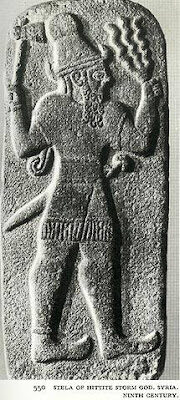
by Pierre Amiet)
[http://www.daimonas.com/pages/trident-briefly.html]
Note the plasma fork 'thunderbolt' in his hand.
In conclusion, the Hittite religion - and religions of the near east in general- were not very much concerned with theology or contemplation, they were purely and simply attempts to understand an environment that was plagued with repeated brutal and arbitrary destruction from the sky.
Here, I would like to say something about the problem of transmission of information. We are talking here about a main event 13,000 or more years ago, and then numerous subsequent events that either included actual physical bombardment of the planet, or events that consisted of dust loading and related climate stress with probable frequent meteor storms. Obviously, the transmission of information over a period of 13,000 years is problematical. It is only for the past 3-4 thousand years that we have had written accounts and, for the most part, what has survived has been badly mangled by modern interpretations. This means that for about two thirds of that time, as far as we know, oral systems played the major part in the transmission of legends of destruction.
Gilgamesh
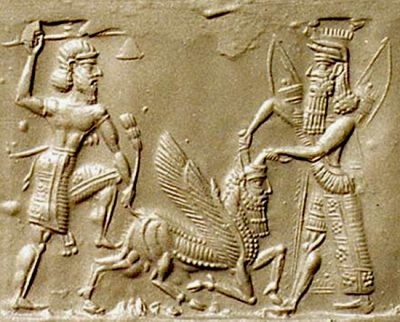
The name was originally Bilgamesh, but that was changed early on, so 'Gilgamesh' it is. Exactly as Baillie has described, the experts studying the epic and myths have come to the conclusion that Gilgamesh is likely to have been a real person, a king who ruled the Sumerian city of Uruk in the era from 2700 BCE to 2500 BCE. However, there are no known inscriptions that establish this. There is only one person he is associated with in a story that is actually attested by inscriptional evidence, a King Enmebaragessi. But that's as close as it gets. Gilgamesh was associated with the expansion of the Ziggurat at Uruk, but the inscription that claims this dates only to 1800 BCE.
It is assumed that the stories about Gilgamesh were circulating in his own time and were later written down. The earliest written stories about him date to the reign of King Shulgi around 2000 BCE, i.e. at least 500 years later. These stories were written in Sumerian and King Shulgi made the claim that the gods and ancient kings of Uruk (including Gilgamesh) were his ancestors and thus legitimized his kingship. One hymn produced at the time is a back-and-forth paean to each other, put in the mouths of Gilgamesh and Shulgi. In short, we can think that the stories produced at this time were little more than political propaganda based on some already existing myth about a very powerful being such as Cúchulainn, i.e. a comet. So, at that time, offerings were made to Gilgamesh as a divinized ancestor, But after the end of Shulgi's dynasty, official support for the cult of Gilgamesh faded.
It is likely that it was Shulgi who commissioned the writing of the earliest Gilgamesh stories (though the epic as we now know it did not exist at that time) and authentic traditions were thereby consciously composed with a view to furthering the agenda of this ambitious king. No tablets dating back to this period actually exist, only later copies, some of which are more elaborate than others, and some have contradictory details. Obviously, we can't be sure of having all the stories, but thus far, the separate epics consist of the following:
Gilgamesh and Agga - This short story describes a strange confrontation between Agga of Kish (son of the aforementioned Enmebaragessi) and King Gilgamesh of Uruk, After a meeting of elders and young men. Gilgamesh has a "terrifying aura" that basically smites the army of King Agga, though Gilgamesh spares Agga. The "terrifying aura" that smites an army natrally inclines one to think of a cometary event à la Cúchulainn, not to mention Moses. The echoes of this story that are retained in the later epic are the consultations with the elders and the young men, and Gilgamesh sparing Humbaba instead of Agga.
Gilgamesh and Huwawa (Humbaba) - This story is known in two versions, a long one and a short one, with variations from city to city where it is found. Gilgamesh sees a dead body floating in the river and this excites his fear of death. He proposes to his servant, Enkidu, to embark on a heroic quest to ensure his fame, thus achieving a kind of immortality. The task chosen is to go to the Cedar Forest and kill its monstrous guardian, Huwawa.
The Sun God provides some helpful demons, and a crew of fifty men is selected for the voyage. (This is already starting to sound like Perseus against Medusa meets the Argonauts.) This story, too, includes some strange auras, only this time they belong to Huwawa. The effect of the auras on Gilgamesh is that he is overcome, stunned, and experiences terrifying visions. (Shades of the Old Testament prophets!) In one version, he describes the visions and Enkidu encourages him to go on and complete the quest. In another, it is Enkidu who has the visions and then tries to dissuade Gilgamesh from continuing. Gilgamesh tricks Huwawa (variations exist on the types of trickery), and Huwawa gives up his auras and Gilgamesh shackles him.
Then Gilgamesh feels sorry for Huwawa and wants to release him, but Enkidu doesn't like that idea; he kills Huwawa and puts his head in a sack to give to the god Enlil (shades of Perseus and Medusa and David and Goliath). However, Enlil curses both of the adventurers for killing the divinely appointed guardian of the Cedar Forest and distributes the seven auras to Nature. Most of this makes it into the later complete epic of Gilgamesh. Nevertheless, for our purposes here, Humbaba/Huwawa is an interesting comparison to Cúchulainn. His face was "as that of a lion. When he looks at someone, it is the look of death." His roar was as that of a flood, his "mouth is death and his breath is fire!" His face is described as like coiled entrails, which harkens back to the 'warp-spasm' of Cúchulainn. (See image above.)
Gilgamesh and the Bull of Heaven - this story is not well preserved in any version, missing the beginning, most of the middle, and the very end. The text begins with the Goddess Inanna refusing to allow Gilgamesh to administer justice in her sanctuary. She demands the Bull of Heaven from her father, Anu. At first he refuses, but she threatens to cry out to all the other gods which scares Anu into complying. He gives her the Bull and Inana sends it to Uruk. Probably Gilgamesh and Enkidu kill the bull. This story is included in the later epic by the middle Babylonian period, though it was probably not part of the earliest version of the whole epic. Obviously, the Bull of Heaven is a comet story. The Bull of Heaven is also familiar from Egyptian mythology. The irish saga where Cúchulainn goes into his 'warp-spasm' is called the 'Táin Bó Cúailnge' (the Cattle Raid of Cooley) and involves great battles (including Cúchulainn's 'warp-spasm') over a magnificent brown bull.
Gilgamesh in the Netherworld - Early texts are fragmentary and what comes across is that it is a death lament. One passage states: "The great mountain Enlil, the father of the gods, ... decreed kingship as Gilgamesh's destiny, but did not decree for him eternal life." Then, later: "He lay on the bed of destined fate, unable to get up." It's hard to make much of this because it is so fragmentary. But, we do note Enlil described as a "great mountain". Perhaps the cometary Gilgamesh fragmented as his "destined fate" and disappeared.
In addition to this small selection of specific Gilgamesh stories, the later formulated Gilgamesh Epic incorporated other traditional Sumerian literary productions that were not originally connected to Gilgamesh. The early life of Enkidu, as it is told in the Gilgamesh epic, seems to be based on a portrayal of primitive man as described in a text entitled 'Lahar and Asnan', where we read: "Mankind of that time knew not the eating of bread, knew not the wearing of garments. The people went around with skins on their bodies, drank water from ditches." The creation of Enkidu by the Mother Goddess, as described in the first tablet of the Gilgamesh epic, may be another tale that has not yet been discovered elsewhere.
The Flood of Utanapishtim - In the standard version of the Epic, Gilgamesh asks Utanapishtim how he attained eternal life like the gods even though he was obviously a mere mortal. Utanapishtim then tells him "a hidden thing, a secret of the god", which is how he survived the Great Flood. This account of Utanapishtim is taken from the Akkadian 'Myth of Atrahasis' which was composed about 1600 BCE.
The story talks about the creation of mankind, how mankind became noisy, corrupt, too numerous, etc., so the gods plot to exterminate all humanity. There is a great Flood which only Atrahasis and his family survive. What Utanapishtim tells Gilgamesh is just a short version of the Atrahasis Myth because the longer version, unrelated to Gilgamesh, includes a lengthy justification for the destruction of mankind while Utanapishtim presents the events as just a whim of the gods.
What is curious is that the Flood Myth in no way advances the action of the Gilgamesh story and is, in fact, just a lengthy digression. The original old Babylonian version of the Gilgamesh epic only had an allusion to the Flood myth. However, we are fortunate that the myth of Atrahasis was included in the Epic of Gilgamesh since it is not well-preserved in texts on its own.
It is clear that the Gilgamesh Epic was created by assembling parts from basic stories about Gilgamesh, similar to the many stories about Cúchulainn, and other parts from unrelated myths and stories. This took place, it seems, over a period of a thousand years! The standard version was based on an earlier Epic of Gilgamesh that was first composed in the Old Babylonian period - 1800-1600 BCE - which came in several variants. There are other fragments from later periods that were found in Anatolia, Syria and Canaan. In Anatolia, the epic was also adapted or translated into Hurrian and Hittite during the Middle Babylonian period (c. 1595 - c. 1155 BCE. Began after the Hittites sacked the city of Babylon.)
In conclusion, it seems that the original epic was a creative assembling of already existing mythic literature about earlier comet interactions, none of which was focused on the theme that apparently occupied the thoughts of the author/editor of the final epic.
The Epic of Gilgamesh is full of adventures and encounters with creatures, interesting people, and even gods and goddesses, with the unifying topic being human relationships and emotions. There is loneliness contrasted with friendship, love contrasted with loss, revenge and regret, and, most of all, the fear of oblivion in death.
It appears that the philosophical slant of the complete epic confined it to mainly literary circles for much, if not all, of its existence. It was obviously known in Mesopotamian scribal circles for some 1,500 years, and in Anatolia and Syria-Palestine during the 2nd millennium BCE. However, the epic does not seem to have been something that was widely known to the masses of people; it was never a byword nor did it generate any colloquial expressions.
No king ever claimed to be as strong or as wise as Gilgamesh. No writings invoke Gilgamesh and Enkidu as paragons of friendship as they do David and Jonathan from the Bible. In all the productions of writings from the culture of Mesopotamia, the few allusions to Gilgamesh occur only in scholarly writings. There are almost no artistic depictions of any element of the story except for the killing of Humbaba. This act appears on a few dozen cylinder seals and a few decorative objects and reliefs from the 15th to 5th centuries BCE. The killing of the Bull of Heaven also appears on a few cylinder seals from the mid-second millennium to the 7th century BCE.
The latest fragment of the epic dates to the first century BCE. It seems that, with the decline and ultimate disappearance of cuneiform writing, the Epic of Gilgamesh was doomed to oblivion, even in literary circles. With the exception of the translations into Hittite, virtually none of the Mesopotamian literature was translated into other languages. There is a complete lack of references to Gilgamesh in the Syro-Phoenician cultures of the first millennium, which is puzzling since cuneiform literature was otherwise widely known in this area during the second millennium BCE (because Akkadian was the language of international diplomacy). The Hebrew Bible has allusions to other persons or themes derived from Mesopotamian sources, including the flood story, but nary a mention of Gilgamesh or anybody like him.
However, in one of the oldest stories that talks about the Greek 'gods' - The Odyssey - we find an epic that is, in many ways, extraordinarily similar to the Epic of Gilgamesh yet cast in an entirely different culture with Odysseus taking the role of Gilgamesh.
The Hellenistic Greeks were interested in the ancient history of Mesopotamia, but not in the native Mesopotamian form. Berossus wrote in Greek of "the histories of heaven and earth and sea and the first birth and the kings and their deeds" between 280-261 BCE. He extracted his information from cuneiform documents and Gilgamesh probably only received a citation for being on a king list: name and length of reign.
In recent years, some scholars have been applying themselves to this problem, coming to the idea that the Near East had a pervasive influence on early Greek literature, particularly Homer and Hesiod. The story of the vanishing god is a case in point. This is one of a group of old Anatolian myths, not a Sumerian or Hurrian story (as far as is known to date). The basic story is similar to that of Persephone. The story is about the disappearance of fertility deities and the resulting withering of the land and loss of fertility.
End of the Late Bronze Age
Let's skip now to around 1200 BCE, the end of the Bronze age. Claude Schaeffer, found that Bronze age sites over a huge area of the near and middle east showed evidence of four destructive episodes, the three most prominent being at 2300 BCE, 1650 BCE and 1200 BCE.
It was the 1200 BCE event that finished off the Bronze Age. the Shang Dynasty in China, and the Mycenaean civilization in Greece disappeared at the same time. (1190 BCE, but who is counting?)
The problem is that even the biggest earthquakes have only local effects, which is one of the reasons Schaeffer's analysis was put aside and is ignored, for the most part, today. The alternative explanation, that during the Bronze Age the Earth was hit not once but several times by debris from space, most likely from a comet broken into pieces, fits the evidence exactly. As we have noted, comets, meteors or asteroids do not have to hit the earth to destroy large areas; remember Tunguska.
The archaeology reveals widespread collapse of the eastern Mediterranean world at the beginning of this period, with cities being abandoned and/or destroyed. Many explanations attribute the fall of the Mycenaean civilization and the Bronze Age collapse to climatic or environmental catastrophe, combined with an invasion by Dorians or by the Sea Peoples or the widespread availability of new iron weapons.
In the period immediately prior to the full-bore onset of the disasters, there is evidence of large-scale revolts and attempts to overthrow existing kingdoms. This suggests economic and political instability. This appears to have been exacerbated due to the influx of surrounding peoples who were experiencing famine and hardship due to climate changes that appear to be associated with increased comet flux.
In respect of the Greek dark age, with the collapse of the palatial centers of Mycenaea, no more monumental stone buildings were built and the practice of wall painting ceased; writing in the Linear B script ceased; pottery became simple in style and minimal in quantity; vital trade links were lost, and towns and villages were abandoned.
The population of Greece was massively reduced, and the world of organized state armies, kings, officials and redistributive systems disappeared. Some areas recovered more quickly than others; there was still farming, weaving, metalworking and pottery-making during these centuries, but it was on a staggeringly reduced level in both volume and technique. It appears that necessity was the mother of invention and hard times led to the survival of pockets of smarter, more creative and more socially engaged individuals. At the same time, such periods also encourage the survival of Machiavellian cheater types - authoritarian leaders looking for followers. It could be said that disaster purifies both the best and the worst of humanity.
The earliest evidence for iron-making is a small number of iron fragments with the appropriate amounts of carbon admixture found in the Proto-Hittite layers at Kaman-Kalehöyük and dated to 2200-2000 BCE. Iron implements were made in Central Anatolia in very limited quantities by 1800 BCE and were in general use by elites, though not by commoners, during the New Hittite Empire (∼1400-1200 BCE). It was during the Greek Dark Age that the smelting of iron was re-learned, exploited and improved, ultimately to replace weapons and armor previously cast and hammered from weaker bronze. It seems that the Greeks must have acquired this knowledge from the Hittites.
Ancient Greece is supposed to be the seminal culture of modern Western civilization. this is because Classical Greek culture was adopted, to some extent, by the Roman Empire, which then spread its hegemony over the ancient world, including the philosophical ideology of Greece, which morphed into Christianity with a bit of Orientalizing influence from Judaism. But we must remember that all of these were heavily influenced by Mesopotamia filtered through the Hittites, who were decidedly not natives to Mesopotamia.
Classical Greece is generally said to have begun about the 8th century BCE when an 'Oriental influence' was imported, including writing, which enabled the beginning of Greek literature, i.e. Homer and Hesiod and, later, Herodotus and others. These beginnings of Greek Civilization began after a 'dark age' that we may justifiably think was a period following global stress and disruption due to cometary bombardment. Supposedly, this dark age followed the collapse of the Mycenaean civilization (which had its own script), and which came with the general, overall collapse - more or less in its entirety - of the Bronze age civilization.
Homer was supposed to be Greek and the Homeric stories were supposed to be the bedrock of Greek culture and civilization. yet the Greeks and Trojans depicted by Homer were nothing at all like the Greeks that later accepted these stories as part of their heritage. In the Iliad and Odyssey, Homer calls the various groups Achaeans, Argives, and Danaans; they did not refer to themselves as Greeks.
Homeric Greece (though it obviously wasn't Greece as we know Greece) was more like a tribal society linked by language; it was far more like Central Asian nomadic society, or even Norse society, than what we know of today as the Orientalized Greek society with its city-states. In Homer's world, there was a ruling class called Basileis, and their responsibilities included providing the individual who would be king, war leader, judge, (and with religious duties included), with advice and counsel.
The king's power was based on the principle of 'first among equals' and was restricted by the Aristoi, or nobility, who comprised an advisory council. There was also the agora, an assembly of the warrior class who had the power of voting on issues. Women enjoyed high status, despite the fact that the society was patriarchal and acknowledged a common ancestor and a common king. The main pursuits of life seem to have been fighting, hunting, herding, rudimentary agriculture and the pursuit and enjoyment of 'manly activities'. Hospitality was the chief virtue, and Bards were highly valued. In short, there was a significant lack of any formal government or any kind of economic system. Most transactions of goods appear to have been based on reciprocity. It was definitely not the 'city-states' of Greece nor did it bear any resemblance to the city states of Mesopotamia.
The events depicted in the Iliad and Odyssey are supposed to date to around 1190 BCE, which would put it right in the middle of a serious cosmic onslaught and climate downturn; the composition by Homer dates to around 800 BCE (though some date him to the time of the Trojan War). The war supposedly originated in a quarrel between goddesses: Athena, Hera and Aphrodite. Right away, we detect the comet element and wonder if the Trojan War was a real war between human beings at all.
Of course, the mythologists, historians and archaeologists are sure that something like the Trojan War happened and they spend a lot of time trying to figure it out and make square pegs fit round holes. In any event, the dating of the Iliad and Odyssey to 1190 BCE is due to this being the estimated time of said 'war', which we now strongly suspect to have been a battle in the heavens. I will note here that Baillie's tree rings show the time of greatest stress to be in 1159 BCE just 30 years after 1190 BCE.
The tree-ring record points to global environmental traumas between 2354 and 2345 BCE, 1628 and 1623 BCE, 1159 and 1141 BCE, 208 and 204 BCE and CE 536 and 545. Baillie argues that the tree rings are recording first the Biblical Flood, then the disasters that befell Egypt at the Exodus, famines at the end of King David's reign, a famine in China that ended the Ch'in (sic) dynasty, and finally, the death of King Arthur and Merlin and the onset of the Dark Ages across the whole of what is now Britain.
His conclusion comes as a shock. not only did the five episodes coincide with the onset of 'dark ages' for society, but they were triggered by cometary impacts. If Baillie is right, history has overlooked probably the single most important explanation for the intermittent progress of civilisation. Worse, our modern confidence in benign skies is foolhardy, and our failure to appreciate the constant danger of comet 'swarms' is the result of a myopic trust in a mere 200 years of 'scientific' records. Our excuse is that Christianity probably suppressed the dire warnings of earlier sages in an effort to downplay their influence, as Baillie points out. The Biblical account of the Exodus and contemporary annals from China speak of cometary activity preceding calamity. Previous writers have wondered if the hail or red-hot stones that befell the Egyptians were due to the eruption of Santorini, the Aegean volcano that destroyed Minoan civilisation. The pillar of smoke that guided the Israelites may have been the plume. But a single volcano is an unlikely cause of a global downturn. So Baillie goes a step further, arguing that a series of cometary impacts around the size of the 20-megaton explosion at Tunguska in Siberia might be enough to trigger earthquakes, tidal waves, volcanic eruptions and ocean floor outgassing. This would explain why comets are seen as portents, along with the occurrence of flooding and poisonous fogs - all reported at the time of Exodus and during others of Baillie's five catastrophes. (Rudder (1999), 'Fire, Flood and comet', New Scientist Book Review, p. 42.) [italics, mine]Homer's world does not describe the world of the Greek City States. It also does not describe the world of the Hittite Empire nor the other Mesopotamian empires that shared the story of Gilgamesh the ostensible model for Homer according to Mary R. Bachvarova as argued in her book From Hittite to Homer: The Anatolian Background of Ancient Greek Epic, (2016. Cambridge University Press).
The earliest versions are Sumerian, dating to at least 2150 to 2000 BCE and were a collection of stories rather than one long epic. It was only around the 17th or 18th centuries BCE when it was fashioned into a single tale of many adventures; this was the time of the arising of the Hittite empire which lasted about 500 years as a great power. After about 1180 BCE, the empire disintegrated, though several independent 'Neo-Hittite' city-states survived until the 8th century BCE. Could it be from there that Homer got his inspiration? The difference in time between the earliest complete epic version of the combined, originally separate, stories of Gilgamesh and the Homeric version that became the Odyssey, is around a thousand years.
Nevertheless, noting the extraordinary comparisons between the compositions, as Trevor Bryce does in Life and Society in the Hittite World, (2002) highlights exceptional faithfulness to, at the very least, particular mythic topos. The experts think that this is remarkable considering the fact that the empires of Mesopotamia had been in the dust for some time before Homer wrote the story down and it wasn't until Berossus, writing in the 3rd century BCE, that texts from Babylon were translated, possibly commissioned by Antiochus I, so they are certain that Homer couldn't have copied anything from the later composite Gilgamesh epic. It is certainly a puzzle that deserves research.
The process by which the Gilgamesh Epic was assembled is mostly understood as described above. Even the various parts are recognized. But it was the Hittites who preserved it for us in translation. Whatever happened, Homer took these stories, and even sometimes exact sequences of events and words, and used them as the skeleton for his Odyssey.
The closest similarity of what he did that I can think of is the way the Old Testament was written using the works of Berossus, Manetho and Plato, as described by Biblical scholar, Russell Gmirkin. (Berossus and Genesis, Manetho and Exodus: Hellenistic Histories and the Date of the Pentateuch (Copenhagen International Series 15), New York, 2006 and Plato and the Creation of the Hebrew Bible (Routledge) New York, 2016.) Gmirkin proposes that the biblical collection was ultimately composed in two phases: the first, the work of the Seventy under royal sponsorship in Alexandria; the second in later stages in Palestine in order to constitute not only a national literature, but also to be an educational program to train obedient citizens.)
"The Hebrew Bible as a whole can best be understood as a literature intended for the education of the soul, utilizing all the tools in the Platonic psychogogic arsenal: poetry, myth and song, theology and prayers, pageant and spectacle, theater, drink and dance and persuasive rhetoric that appealed to the patriotic, praised the noble and exalted and condemned the wicked and disobedient, who were threatened with punishments in this life and terrors in the next" (p. 267).To give an example of my own: imagine the story of Perseus and the Gorgon being transformed into the story of David and Goliath. More than that, was there a relationship between the terrible face of Moses, in comparison to the terrible visage of Huwawa, the guardian of the Cedar Forest. Huwawa was described as a giant protected by seven layers of terrifying radiance. He was killed by Gilgamesh and Enkidu in a story that is quite similar to the slaying of Goliath by David and Medusa by Perseus. Which way does the influence flow?
In any event, what ultimately emerged from this dark age was the early Greek civilization: city states similar to the city-states of the ancient Sumerians a few thousand years earlier.
At the time the Greeks emerged as a power in the ancient world, the natural world was perceived as a purpose-driven, overwhelming and overpowering system of larger-than-life forces which could, in the blink of an eye, act negatively toward human beings. This is the view of the world that comes through loud and clear in the works of Homer. The people of the time did not question this view of reality, and thus issues of morality were not debatable: you behaved according to the precepts outlined in the Odyssey and exemplified by Odysseus, or you suffered the fate of the suitors.
Then with an angry glance from beneath his brows Odysseus of many wiles answered him: "Eurymachus, not even if you should give me in requital all that your fathers left you, even all that you now have, and should add other wealth thereto from whence ye might, not even so would I henceforth stay my hands from slaying until the wooers had paid the full price of all their transgression. Now it lies before you to fight in open fight, or to flee, if any man may avoid death and the fates; but many a one, methinks, shall not escape from utter destruction." (Homer, Odyssey 22.60)These ideas and the related myths had apparently taken shape during the Dark Age.
Notice above, in the quote from Rudder, he says: "Christianity probably suppressed the dire warnings of earlier sages in an effort to downplay their influence".
That seems to be exactly what the Greek Philosophers were about as we will see next.
Continue to Part 3
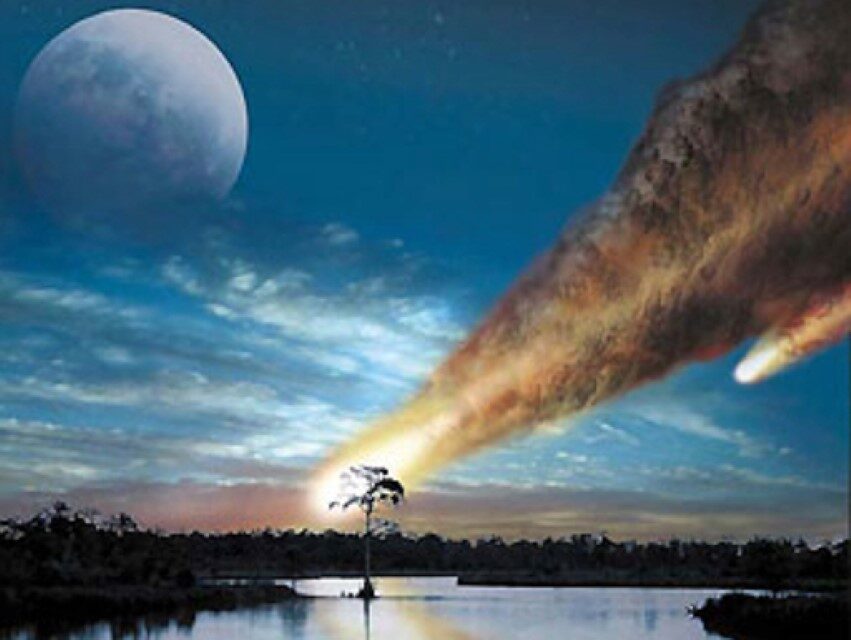
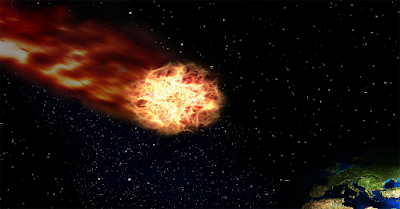
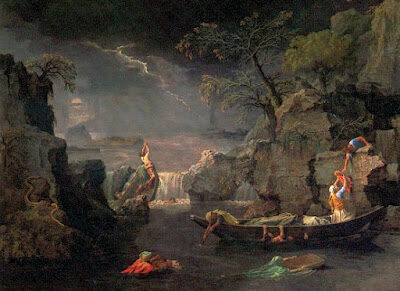
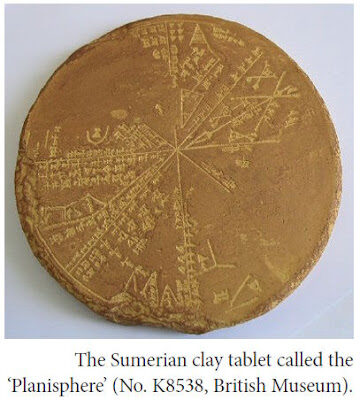
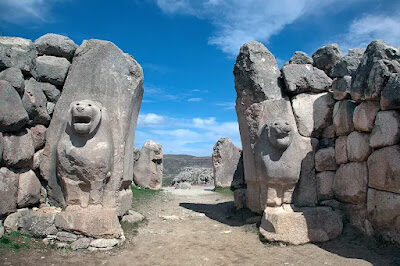
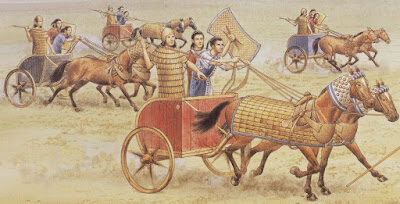
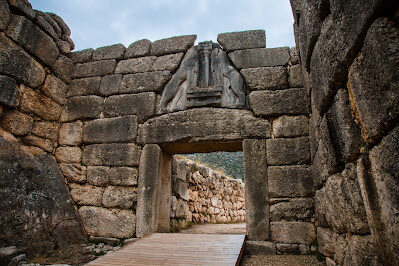
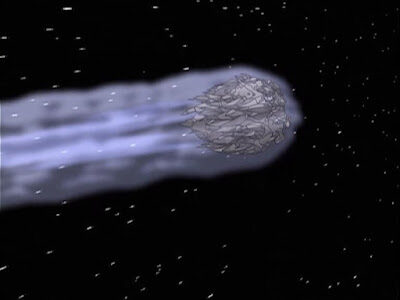

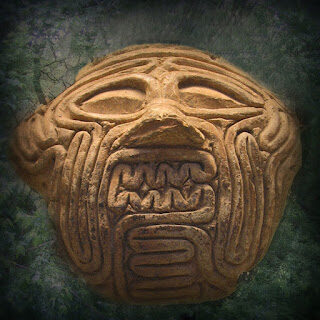
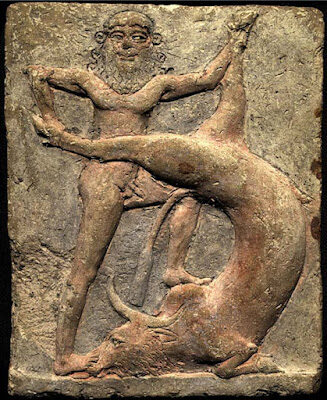
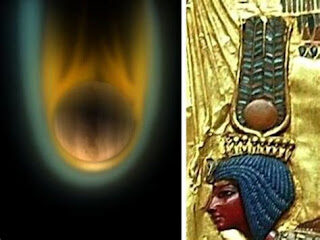
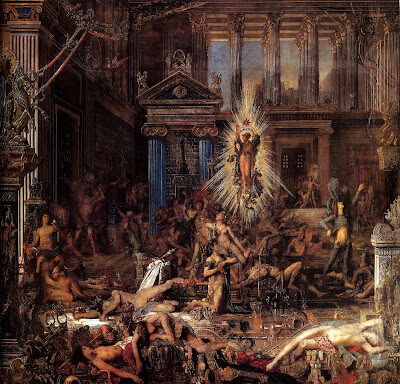



Sure there's some good truths in there, but very few know that ancient Indian philosophy is far superior, in fact, the important stuff, I mean the big picture stuff, in greek phil. was "borrowed" from the Indians. Yes it was. I forget the name but he was prior to plato and taught him much after returning from India.
India is where it all started in fact, we have the brits to thank for hiding that fact and coming up with the Ludicrous Aryan hypothesis. Their stuff is alive and powerful today , Shankaracharya was the more recent avatar to speak to truth.